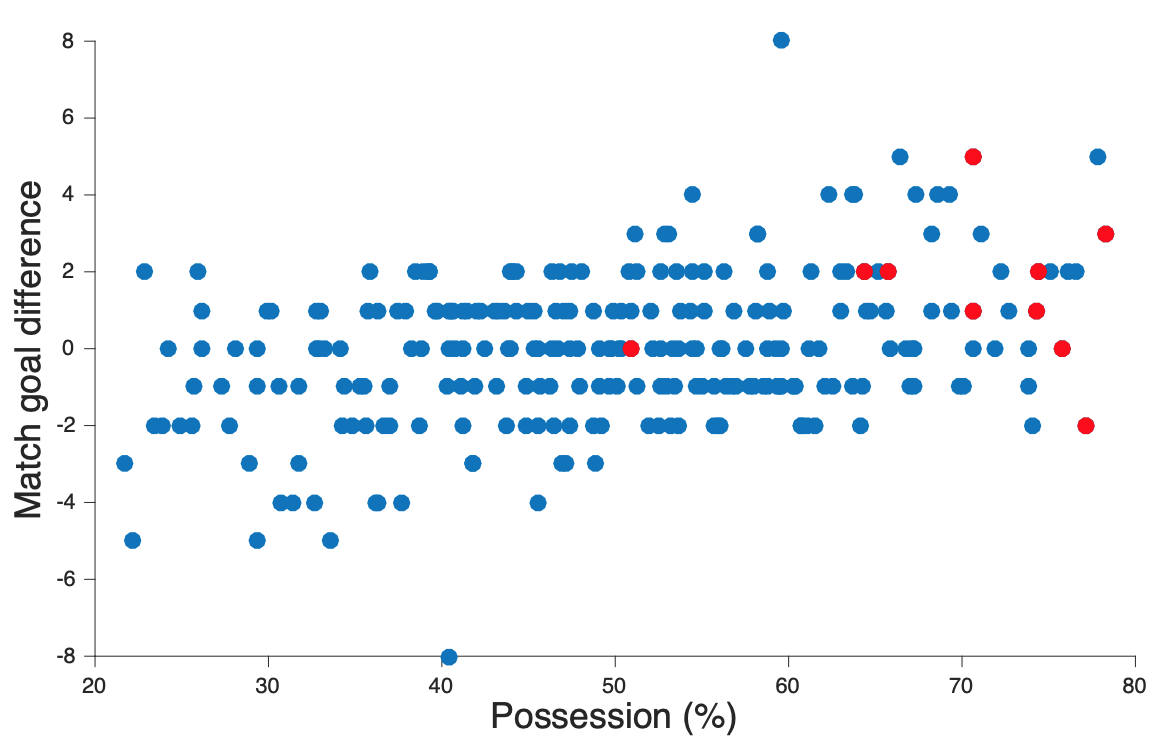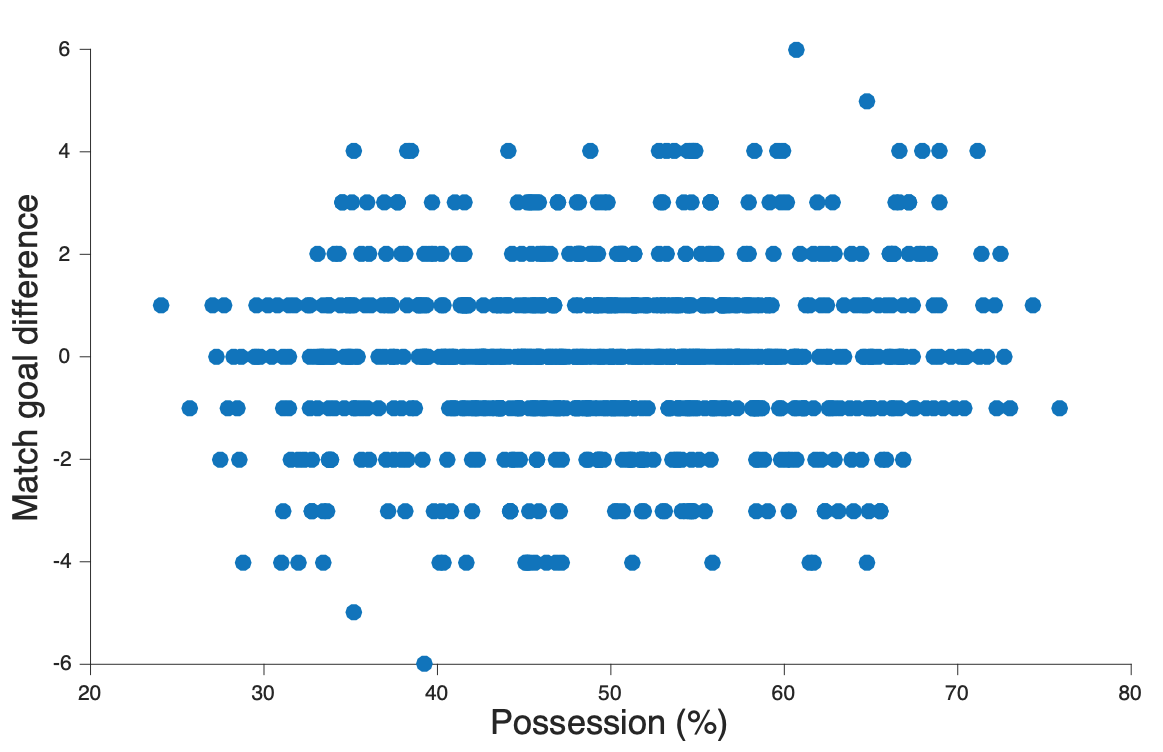Case study: Possession
How important is it to have the ball?
Before, during and after football matches we are presented with a lot of numbers. Distance the players run, number of shots on and off target, number of corners and ball possession are just some of the stats we see on websites, on TV and in newspapers. It might seem as if we have all the numbers we need to assess whether a team is playing well or badly. But do these numbers really reveal what is happening in a match? To answer that I will look at one of the stats that is displayed and talked about most in football: possession. Some teams, such as Barcelona and Bayern Munich, are both renowned for having the ball a lot. Below is a plot of possession vs match goal difference in the 2015-16 season of the Champions League.

Each dot is a single match. The red dots are Barcelona and the blue dots are all other teams. Barcelona had a lot of ball possession and they also won most of their games. If you look carefully at all the dots you can see that goal difference increases with possession across all teams. Statistics confirms this result: teams that have the ball for longer periods tend to win more matches.
The problem is that possession doesn’t always predict matches. Barcelona lost only one game in their Champions League campaign: going out of the competition with a 2–0 away defeat to Atletico Madrid. Barcelona’s possession in that match was the third highest out of all matches played in last season’s Champions league. Yet, for all the time they had on the ball, the team failed to score.
It might be possible to attribute Barcelona’s loss that night to bad luck. But the problem with possession as a statistic for measuring perfeormance goes deeper than just bad luck. Below is a plot of the relationship between possession and goal difference in the Premier League, also in the 2015-16 season.

Can you see a pattern? No? That is because there isn’t one. There is no strong relationship between goal difference and possession in the past two season’s Premier League. Nor was possession a good predictor of success at Euro 2016. Teams that conceded the ball to the opposition, like Portugal and Wales, did just as well as those that kept hold of it, like Germany and Spain.
So next time you see a possession stat flash up your screen, be careful how you interpret it. Often it is the team that is chasing the match that has the ball for long periods, while the team in the lead waits for a chance to counterattack. Both teams may well be equally likely to get the next goal.
Using statistics to understand
On several occasions I have heard both experts and fans use possession stats to claim that maths isn’t useful for studying football. The point they make goes down the lines of, “See. Leicester City didn’t try to keep the ball all the time like Arsenal did, but they won the Premier League. Just goes to show that stats can’t tell you anything about football.”
But this viewpoint gets everything the wrong way round. There is a preconception that possession is a good predictor of results, and statistics shows that this preconception is wrong. Stats help explain why it isn’t so strange that Leicester City, Atletico Madrid and Iceland have been successful: it is tactics and skillful players that win matches, not just having the ball.
It isn’t the numbers themselves that allow you to understand football, but the way you use statistics to understand the numbers behind the game.